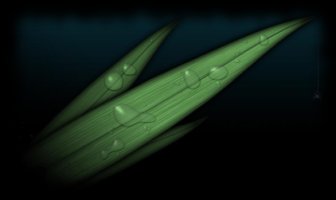Causes
Overview
Agricultural runoff is Nonpoint Source (NPS) pollution. Unlike industrial waste plants, the NPS pollution occurs at many different sources. In agricultural runoff, the pollution occurs when sediments, pesticides, and various other agriculture remnants are washed from the land during irrigation or a storm. Some of the main pollutants the result for agriculture include sedimentation, irrigation. pesticides, nutrients, and livestock.
Sedimentation & Irrigation
In agricultural runoff, the predominant source of pollution comes from particles of soil washed off from the farm lands. Rain water and irrigation carries these soil particles to larger bodies of water. The most obvious concern includes nutrients, pesticides, and heavy metals that attach to the sediments, but the physical particles of soil themselves also pose a large issue. The soil particles can cloud the water, thus decreasing the amount of sunlight that reaches underwater plants. The particles can also clog gills of fish and other aquatic animals.
Similar to sedimentation, excessive irrigation and neglecting drainage causes soil particles to wash off the land into larger bodies of water. Apart from the pollution similarly found in sedimentation, poor irrigation practices cause a large amount of erosion to the land. In turn, the erosion causes an even larger amount of sedimentation.
Pesticides
Often times, farmers uses several pesticides to kill various pests. These pests include insects, fungus, and other intrusive species. Although they help prevent attack and sustain the lives of the crops, many of the chemicals used are poisons contaminating the wildlife and water supply. Most of the time, absorbtion occurs where the pesticide binds to the soil particles. This can be seen as the carrier from the field to the bodies of water during rain or irrigation. In conjunction with sedimentation, the insecticides, fungicides, and herbicides wash off the fields into larger bodies of water.
Nutrients
Aside from the chemicals used to kill various external attacks, many of the chemicals used as nutrients for the crops also have adverse effects on the environment. Many of the chemical nutrients include nitrogen, phosphorus, and potassium which are used as fertilizers. They promote growth and sustainability needed for the crops. Similar to pesticides, the nutrients are washed into larger bodies of water. The positive growth element of the chemicals may seem to help the environment, but in reality it causes over growth in algae. The aquatic plants receive more nutrients than usual, throwing the balance of nature.
Livestock
Farmers inject chemicals into the fields to help the crops, but a commonly overlooked issue is livestock. With large herds of livestock comes a massive amount of manure. Manure, although it does contain some nutrients, also contains many viruses and pathogens. Similarly to pesticides and nutrients, the manure and all of its diseases are subject to runoff and sedimentation as well. This releases all the viruses and pathogens to the bodies of water. Ground water can also be contaminated by seepage of the manure through the soil.
Nonpoint Pollution of Surface Waters with Phosphorus and Nitrogen.
Pesticides in Surface Drinking-Water Supplies of the Northern Great Plains.
